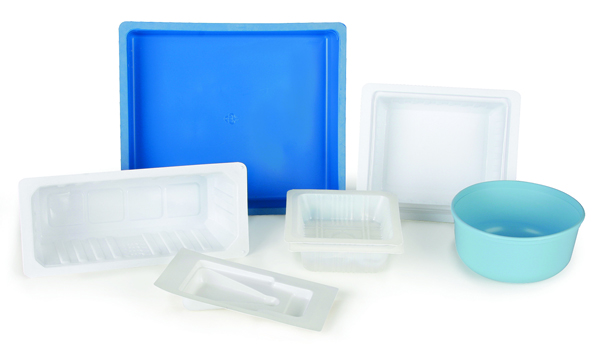People who are accustomed to recycling at home often find it frustrating to throw away recyclables at work. And hospitals generate a lot of recyclables. Most hospitals recycle plastics and other materials from the cafeteria and office areas. However, as hospital staff know, a lot of recyclable plastic is used in the patient care areas, as well. Trays, pitchers, basins, and blue wrap are just a few of the items that could be recycled.
Taking Action
It can feel like quite a challenge to set up a new recycling program that includes plastic from patient care areas. Fortunately, the know-how is available and HPRC is here to help. Successful operation of such a recycling effort can significantly increase the amount of material recycled. As much as one-fifth of a hospital’s waste can be prevented from going to a land fill or incinerator, according to studies of waste generation and recycling.
But Where to Start?
If you want your hospital to start to recycle more plastics, you will likely find other staff members who are enthusiastic about recycling. Startup of a plastics recycling program for patient care areas almost always depends on one or more staff members making a commitment to the program and convincing management that it is worthwhile.
And herein lies the challenge. Making a plastics recycling program work involves financial outlay and changes in daily operations, maybe additional vendor relationships with recycling companies, and use of additional space for the recycling containers throughout the hospital and in the loading dock area. In order to create a new recycling program, management first needs to understand the advantages and buy into the needed changes.
Recycling plastics from patient areas could add work and increased space usage. It could appear to increase the cost of running the hospital, so management may be at first unwilling to explore the option. Recycling advocates need to present the whole story, including the costs and the benefits, so management can make an informed decision.
To help support those who champion recycling in their hospitals, HPRC recently released a set of tools to help present a recycling proposal to hospital management.
Free, Simple Tools from HPRC
To learn more about how to promote a recycling program at your hospital, look at the resources in the Leading the Discussion on Plastics Recycling section of the website.
-
- A checklist helps you determine if it is a good time to propose a new recycling program.
- A guide steps you through the process of creating a compelling business case for the new recycling program.
- A customizable presentation template makes it easy to pull together a persuasive slide deck.
- Case studies show how other hospitals have put plastics recycling programs into action.
A recycling program that includes plastics from patient care areas can increase employees’ satisfaction as they know they are contributing to earth-friendly operation of their hospital. The program can also reduce the hospital’s waste disposal expense. Finally, the hospital can enjoy increased goodwill as the local community learns of its commitment to increased recycling.
While it may take considerable effort to create the program, the rewards are great, including the satisfaction of doing the right thing for the environment.

